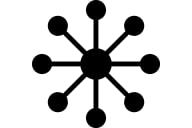You have /5 articles left.
Sign up for a free account or log in.
Until two weeks ago, I had been laboring under the naïve assumption that one of the primary goals of every academic was to change students’ beliefs when they were based on inaccurate information. I was awakened from this dogmatic slumber at an interdisciplinary faculty meeting by colleagues who reacted with dismay to my confession that I had tried and failed to disabuse one of my students of Creationist beliefs.
The conversation became more heated when I read to the group what the student had written on her final exam: "I wrote what I had to ‘agree’ with what was said in class, but in truth I believe ABSOLUTELY that there is an amazing, savior GOD, who created the universe, lives among us, and loves us more than anything. That is my ABSOLUTE, and no amount of ‘philosophy’ will change that."
Two of my colleagues, one in the language arts and one in psychology, argued that it was an inappropriate use of my authority to attempt to change this student’s belief; rather, my role should have been to provide her with data so that she could make better decisions.
I countered that both the process that allows one to arrive at Creationist conclusions, and the conclusions themselves, are completely divorced from reality, and that my role was not simply to provide evidence and counterexamples and hope for the best, but to help her overcome a false belief and supplant it with a true one.
Their unanimous reaction to this declaration temporarily made me question one of my basic assumptions about the responsibilities of college educators: Should professors attempt to change students’ beliefs by consistently challenging false beliefs with facts?
I believe that this is exactly what our role should be. My colleagues’ intense, unexpected, yet understandable reaction to my failed attempt change the mind of a student, I believe, fundamentally misconstrues what the role of educators should be. I believe our role as educators should be to teach students not just factual data, but the importance of critically examining beliefs by exposing them to facts, and then revising cherished notions when confronted with reliable but discomforting evidence.
In every discipline there are certain signature pieces of information that need to be known in order for students to have a basic familiarity with the subject matter. In math, for example, one needs to understand the role of the plus sign in order to do basic math; in history one needs to understand the calendar system so that events can be situated on a timeline; in music one needs to understand “melody,” “harmony,” and “rhythm” so that pieces can be framed, understood and then commented upon, etc. Within my discipline, philosophy, students need a rudimentary understanding of key thinkers like Plato and Aristotle, and also a basic understanding of reliable methods for parsing the truth.
There’s a fundamental difference between knowing and believing. Belief, as the American philosopher William James defines it, is the willingness to act upon the promise of the truth of one’s beliefs. Merely knowing signature pieces of information is insufficient. One must believe, for example, that the plus sign is actually used to add numbers.
This is true in all disciplines. If one is teaching civil engineering, for example, it is not enough that students merely know how much pressure various metals can withstand; students must cross the boundary between knowledge and belief so that when they begin their professions and actually design and build bridges, they will act upon their beliefs. One can know that steel is superior to balsa wood in the construction of suspension bridges, but without belief the relationship between knowledge and action cannot be cemented.
Furthermore, within each particular course there are also signature pieces of information that students need to understand. For example, I teach a class entitled “Science and Pseudoscience” (the student who wrote the above comments on her exam was enrolled in this class). In Science and Pseudoscience, students need to understand a basic mechanism, rooted in the scientific method, by which they can reliably discern true empirical claims from false empirical claims.
As expected, we discuss a wide array of both scientific and pseudoscientific topics, including astrology, homeopathy, chelation therapy, and vaccinations. It is not enough for my students to know that vaccinations do not cause autism; they must also believe this and then eventually act accordingly. (In this case, action consists of not being afraid of vaccinating their children out of fear that they could cause their children to become autistic).
The primary goal of every academic should be to bring students’ beliefs into lawful alignment with reality. An example from critical thinking may help to make this clear: there are certain ways of making decisions that are superior to other ways of making decisions. Drawing from our civil engineering example above, if I want to figure out how far to dig into the earth when laying a foundation for a bridge, a bad way to do this would be to flip a coin: heads it’s 50 meters and tails it’s 200. Rather, one should act upon the best available evidence and make a rational, informed decision that should then guide one’s actions. It is not enough to merely present students with better ways of making educated, rational decisions. It is an indispensable part of the educational process that students then leave the learning environment and actually build reliable, practical bridges in which travelers can literally trust their lives.
Perhaps the confusion over the role of the educator in regard to student beliefs stems from the conflation of facts and values. Perhaps this view of the classroom as a “belief-mill” reeks of a type of value-imperialism that many liberal (and some conservative) academicians find repugnant. The rejection of the view of the academician as belief maker may thus be dismissed on ideological as opposed to factual or pedagogical grounds.
There is an incommensurable gulf between attempting to change students’ values and attempting to help students align their beliefs with reality. Some values, like matters of taste, have a fundamentally internal, subjective component. Facts relate to the objective status of things. Belief that homosexuals should be allowed to marry, for example, is a moral belief upon which even biological facts about what causes homosexuality may have little effect.
Belief that the age of the earth is closer to 4.5 billion years, not 6,000 years, is a true, empirical belief. The latter does not fall under the category of a matter of taste, instinct, revelation or value, and is true independent of subjective considerations.
With regard to our roles as educators, we should not be seeking to convert students’ moral beliefs, but we should, and we are obligated to, help students lend their beliefs to true propositions and repudiate false ones. A teacher is obligated to use cognitive dissonance to inspire students to shape a more reliable picture of reality that informs their sense of cause and effect.
The alternative would be mass customization of teaching in a way that supports only the beliefs each student brings to our classrooms. Such a regime would leave many students in the dark, believing knowledge need not be based on facts. Bridges would collapse. Those inclined to escape their ignorance might not believe it important enough to do so.








